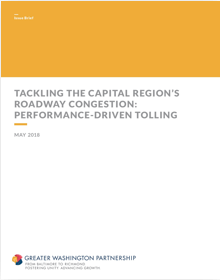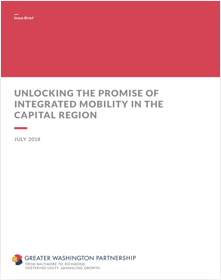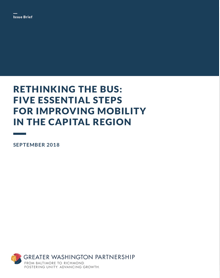The Capital Region of Baltimore, Washington, and Richmond is an economic powerhouse—the third largest regional economy in the United States, and the seventh largest in the world.
With more than 10 million people; hundreds of major companies; world-class universities and research institutions; four significant airports; two marine ports; proximity to the ocean, mountains, and the bay; access to the arts and top-notch museums; and the seat of the United States government, our region has unparalleled strengths, diversity, and potential.
Our transportation system, however, is too often failing to meet our needs; and, as the population continues to grow, the system is on path to become a liability that undermines our competitiveness and impedes our quality of life. The Capital Region’s transportation system was built over decades and it, indeed, boasts an extensive network of multi-modal assets compared to many peers. The challenges the system faces are a result of the lack of coordination across jurisdictions, underinvestment relative to growing consumer needs, and inconsistent execution due to the lack of a clear and consistent agenda for the region. We are already feeling the pinch—through lost wages and productive working hours, higher prices of goods as the cost of moving freight rises, and challenges attracting and retaining talent.
Even if we execute on currently planned investments, we will only slow the deterioration of our transportation system’s performance. With currently planned investments, by 2040 the region’s consumers are projected to see congestion grow by more than 150 percent from 2015 levels. In other words, by 2040 the region’s consumers will go from sitting in congestion 30 percent of each trip to nearly 50 percent.
This is unacceptable. We must act with urgency and boldly look to both straightforward and innovation solutions. We must collaboratively approach this collective challenge. That is what is required for the Capital Region to take its appropriate place as one of the most important regions for decades ahead, a region that is a global leader with a high quality of life, a region where everyone can thrive and reach their potential.
It is with that challenge that the Greater Washington Partnership embarked to develop a Blueprint for Regional Mobility. Yet, the development of such an effort requires the input and collaboration of many. With support, collaboration, and input from the public and hundreds of stakeholders across the Capital Region, the national and regional leaders who comprise the Partnership’s Regional Mobility Steering Committee, the Equitable Access Task Force, and the Employer Mobility Solution Task Force, the Greater Washington Partnership releases the Blueprint for Regional Mobility, a performance-based transportation agenda bridging jurisdictional boundaries, combining a range of solutions to drive improvement around four priorities: (1) connecting the super-region; (2) improving consumer experience; (3) ensuring equitable access; and (4) integrating innovation.
The Capital Region’s Blueprint for Regional Mobility lays out an agenda for working together to make tangible progress on these priorities, with specific actions our region’s public leaders and private employers can take to address the unique challenges facing our region. Only through collective action can we ensure that when one wins, we all win.
Together, we can reshape our region’s transportation system. Implementation of the Blueprint’s solutions will measurably improve the performance and reliability of our transportation system for all of our region’s residents—transforming the system into an asset that ensures we remain globally competitive. The prosperity and future success of our region are too important for us to wait any longer.
Mobility Co-Chairs, Greater Washington Partnership



































